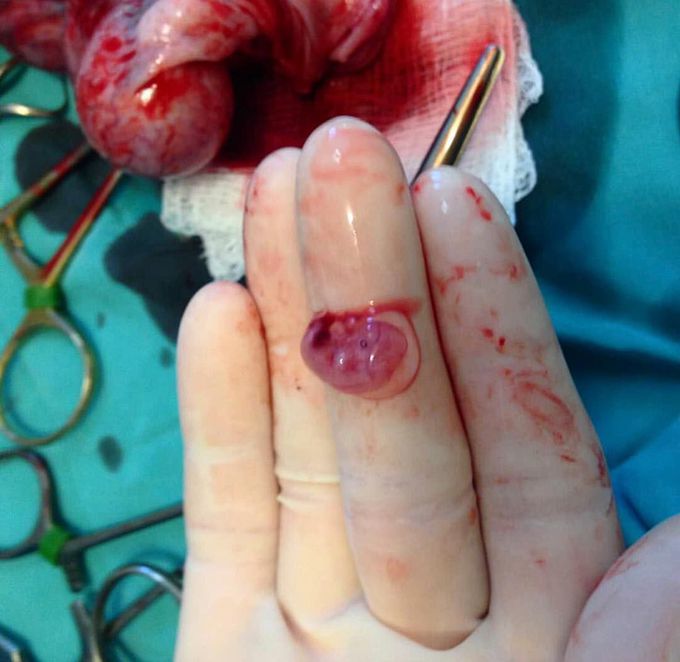


Tiny ectopic pregnancy extracted from a left fallopian tube!!
Ectopic pregnancy is the result of a flaw in reproductive physiology that allows the conceptus to implant and mature outside the endometrial cavity, which ultimately ends in the death of the fetus. It is basically an extrauterine pregnancy, the vast majority in the Fallopian tubes. Ectopic means 'misplaced'. The implanted embryo adheres and burrows actively into the tubal lining. The fallopian tubes are not designed to hold a growing embryo; thus, the fertilized egg in a tubal pregnancy cannot develop properly. When a fetus does develop, it is non-viable for life. Normally, hair-like cilia located on the internal surface of the fallopian tubes carry the fertilized egg to the uterus. Damage to the cilia or blockage of the fallopian tubes is likely to lead to an ectopic pregnancy. Women with pelvic inflammatory disease (PID) have a high occurrence of ectopic pregnancy. This results from the build-up of scar tissue in the fallopian tubes, causing damage to cilia. If however both tubes were occluded by PID, pregnancy would not occur and this would be protective against ectopic pregnancy. Tubal surgery for damaged tubes might remove this protection and increase the risk of ectopic pregnancy and tubal ligation can predispose to it. Visualization of an intrauterine sac, with or without fetal cardiac activity, is often adequate to exclude ectopic pregnancy. It may be unruptured or ruptured at the time of presentation to medical care. Tubal rupture (or rupture of other structures in which an ectopic pregnancy is implanted) can result in life-threatening hemorrhage. The fetus was removed and the placental site was found to be adjacent to, and involving, the left fallopian tube.
Hemodynamic stimuli&nonhemodynamic stimuliEffects of sugar on teeth

